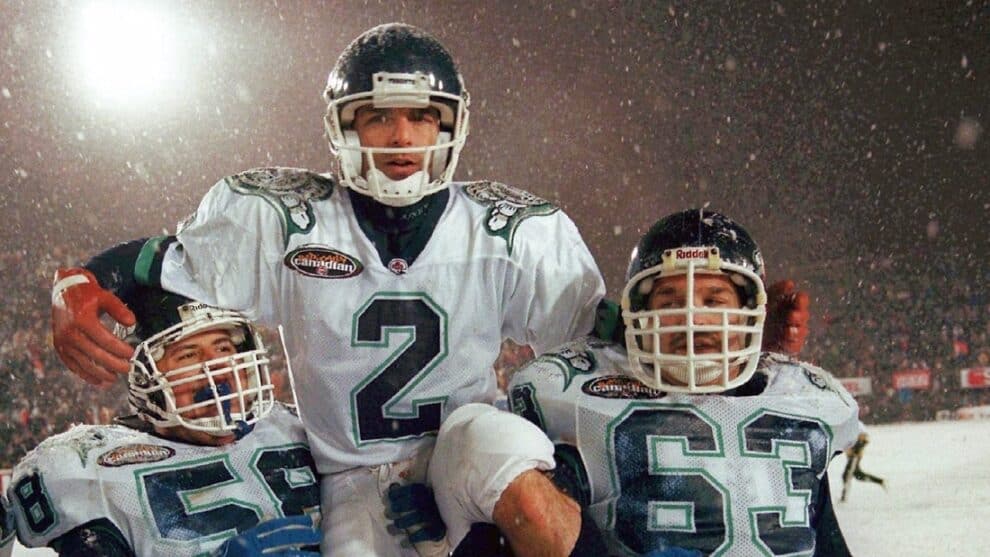
- Canadian professional football can trace its roots back to the early 1900s.
- The CFL was inaugurated in 1958.
- With the exception of an ill-fated stab at US expansion, the CFL has maintained its strictly Canadian identity.
The Canadian Football League (CFL) stands as a testament to the enduring passion for football in Canada. With a rich history that spans over a century, the league has carved its own distinctive identity while offering thrilling gridiron action to fans across the nation. Even though the National Football League (NFL) has found considerable popularity ‘North of the Border’ the CFL has maintained a very solid market niche.
The CFL traces its roots back to 1909 when the Interprovincial Rugby Football Union (IRFU) was formed. The IRFU was composed of teams from Eastern Canada and marked the beginning of organized football in the region. Over the years, the league expanded and went through several transformations. In 1958, the IRFU merged with the Western Interprovincial Football Union (WIFU) to form the CFL, solidifying the league’s status as the premier football competition in Canada.
Throughout its history, the CFL has undergone various changes to its rules and regulations, contributing to the unique brand of football played in Canada. Notably, the league introduced the “three-down” format, distinguishing it from the four-down structure of its American counterpart. This adaptation fosters a fast-paced, high-scoring style of play that sets the CFL apart. The CFL has also implemented other innovations, such as the introduction of the “rouge” (a single point awarded for a touchback), which adds excitement and strategic elements to the game.
The CFL has witnessed numerous unforgettable moments that have etched themselves into the annals of Canadian football. The 1954 “Mud Bowl” between the Edmonton Eskimos and the Montreal Alouettes, played in a torrential downpour, is regarded as one of the most iconic CFL games. The rise of legendary quarterbacks like Jackie Parker, Russ Jackson, Doug Flutie, and Warren Moon added to the league’s allure, captivating fans with their skill and charisma. The “Greatest Grey Cup Ever” in 1989, featuring the Saskatchewan Roughriders and the Hamilton Tiger-Cats, showcased the drama and excitement that the CFL championship game consistently delivers.
The CFL has faced its fair share of challenges and transformations. In the 1990s, the league expanded into the United States, with mixed results. Despite initial enthusiasm, the American teams faced difficulties in attracting fans and were eventually disbanded. However, this expansion experiment helped the CFL learn valuable lessons and reaffirmed its Canadian identity. The league has since focused on growing its presence within Canada, captivating audiences with thrilling matchups and embracing a strong sense of community and national pride.
In recent years, the CFL has continued to evolve, adapting to changing times and expanding its reach. The league has embraced technological advancements, enhancing the fan experience through digital platforms and interactive content. The CFL has also demonstrated a commitment to inclusivity and diversity, promoting initiatives that celebrate the multicultural fabric of Canada. As the CFL looks towards the future, it aims to further strengthen its fan base, showcase the best football talent in the country, and maintain its position as a cherished part of Canadian sports culture.
The Canadian Football League’s history is a testament to the enduring passion and spirit of football in Canada. With its distinct brand of gridiron action, iconic moments, and beloved players, the CFL has carved a unique place in the hearts of fans, solidifying its status as a cherished institution in Canadian sports.









